Physics is an interesting subject. It makes you reason and think beyond the obvious. You would expect light to pass through transparent glass in totality but that is not the case. Some light when it hits a transparent glass is reflected. Whether you study physics like me, a student, or in any profession, this is something that you observe every day as you walk the on the streets or while window shopping.
When light hits any surface including those that are transparent, the light interacts with glass atoms causing it to change direction many times which is called, Scattering of Light. The larger percentage of light passes through the glass, while some are reflected back in the process.
To understand more about how glass interacts with light, and whether it absorbs, reflects, why, and how glass reflects off light, this article will help unearth all the details that you need to know about this subject. I am sure that at the end of it, you will have gained more insights that perhaps you did not know.
Table of Contents
- 1 Does Glass Reflect or Absorb Light?
- 2 How Does Light Reflect Off Glass?
- 3 How Can Light Reflect Off Glass?
- 4 Why is Light Reflected Off Glass?
- 5 Why Does Glass Become a Mirror in the Dark?
- 6 How Do Glass Mirrors Reflect Light?
- 7 Why Does Glass Sometimes Reflect Light – How the Eyes Work
- 8 Can Colored Glass Reflect Light?
- 9 Can Clear Glass Reflect Light in Different Colors?
- 10 Final thoughts
- 11 Hot Glass vs Cold Glass – What’s The Difference?
- 12 Can Quartz Be Made Into Glass? Guide On Quartz & Glass
- 13 What Is Panda Glass | Ultimate Guide To Panda Glass
Does Glass Reflect or Absorb Light?
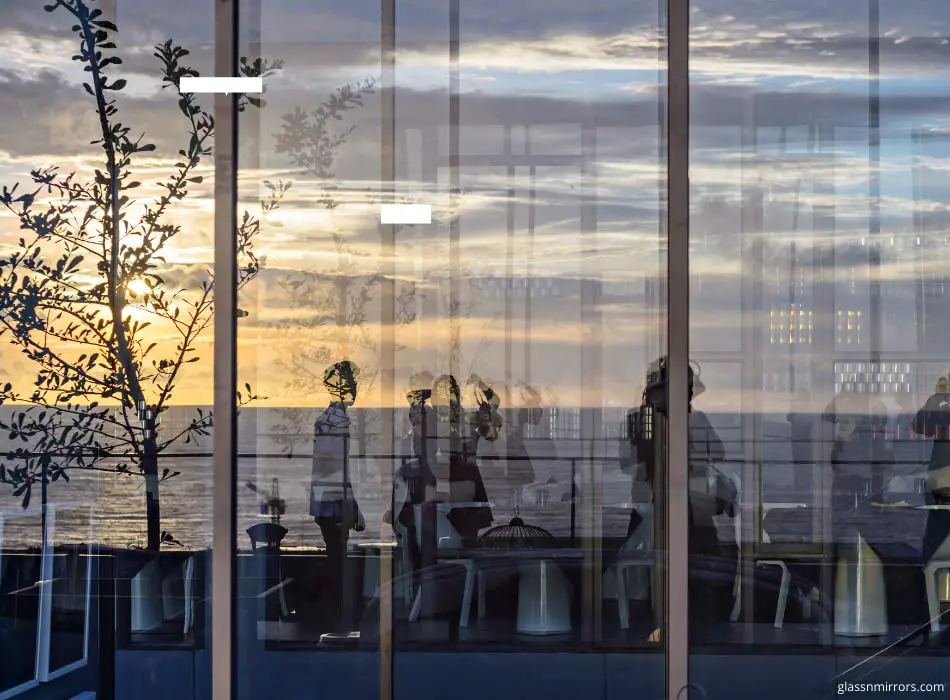
Glass can reflect light, but cannot absorb visible light. Reflection of light happens when light changes direction after it bounces off of a surface.
What is light reflection?
Light reflection, like different forms of electromagnetic radiation, takes place when light waves hit a surface that does not absorb energy.
For example, thin of a smooth-surfaced pool of water, incident light is reflected so perfectly, you can see a clear mirror image of the surroundings near the pool. Throw a stick into the pool and the water forms small waves that disturb the reflection. This happens because the light rays are scattered in different directions. Hence, no mirror image.
Different objects engage with light rays either through;
- Reflection
- Refraction
- Specular reflection
- Diffuse reflection
- Absorption
Refraction is the bending of light. Refraction is when light bends upon hitting a certain material. This, as it happens when water waves or soundwaves behave when they hit solid or liquid materials. In glass, refraction enables experts to make prisms, lenses, and magnifying glasses. Nature also plays its part to make rainbows through the refraction of sun rays.
Specular reflection is when the rays of light hit a particular surface and, thereafter, are reflected back in a single direction. An excellent example of this is a plain mirror or a glass window at night.
Diffuse reflection, on the other hand, is where light rays are reflected back in several directions. Light can bounce back from non-glossy surfaces like paper, clothing, and bicycle reflectors showing how to diffuse reflection works.
Absorption is when the material absorbs light like something that is black.
How Does Light Reflect Off Glass?
Tiny particles of light otherwise known as Photons behave a certain way once they hit glass surfaces at certain speeds. The atomic structure of glass is what causes photons to interact uniquely with light.
Photons are like atoms. Electrons are part of the nucleus of an atom existing in varying energy levels therein. Electrons must gain energy to move from a lower energy level to a higher energy level.
In the same way, electrons must lose energy to move from a lower energy level to a higher energy level. Either way, the electron loses and gains energy in distinct amounts.
When photons are traveling towards a particular solid substance, one of three reactions takes place.
- Absorption – here, the photon gives up its energy to electrons making up the material. This extra boost of energy in electrons causes them to move to higher energy whereas the photon disappears.
- Reflection – for reflection to occur, the photon loses its energy to the material. However, an identical photon with equal amounts of energy is emitted.
- Transmission/Refraction – here, the photons pass in and out of the substance unchanged. Transmission occurs because there are no electrons in the substance for the photons to interact with. The photons continue past the substance and on to another material that it can interact or exchange energy with.
It is believed by some that you could be burnt by mirrors reflecting UV Light! Read more on this to find out if that is true.
With glass, it is possible to achieve all three but what we can see is either reflection or refraction as in thick glasses. Glass can absorb light but in other wavelengths such as ultraviolet light.
Glass has a larger bandgap than most materials. An energy band is a region within a particular substance where energy levels exist as a unit. Band gaps exist between one energy band to another. The reason why light is neither absorbed nor reflected off of glass is that glass has larger band gaps.
Electrons need a certain level of energy to move from one energy band to another. Photons in light do not have adequate energy to cause electrons to move through different energy bands. This explains why instead of being reflected or refracted, photons travel through glass. Hence, making glass transparent.
How Can Light Reflect Off Glass?
When light bounces off of a surface, it’s called reflection. When this surface is shiny and smooth as is the case with polished metal, glass, or water, reflection occurs.
In isolated cases, light can get reflected from glass. Most of the light is reflected and not transmitted from glass provided the light source is close to the glancing angle.
A glass door or window is generally clear. Yet, it can reflect about 4% to 8% of light depending on the angle at which light hits the surface. This means that 92% of light passes through glass. Which explains why you can see glass despite it being transparent.
Can mirrors reflect heat? Find out here.
An ideal example is where you are outside beside the lake next to the mountain. Do you notice how the water shows a perfect mirror image of the mountain and surrounding trees and houses?
Something else you might miss is that the actual mountain appears much brighter than its reflection in the water. This is because less light is being reflected from the mountain. When light travels through air most of it is refracted and only a smaller percentage of light is reflected onto the surface.
Why is Light Reflected Off Glass?
When light travels through air and through clear material like glass, its speed changes. This change in speed of light is what causes reflection and refraction of light by the glass. Glass is clear and transparent. How come you can see it? Because it can reflect and refract light at a different speed than it does through air.
Why Does Glass Become a Mirror in the Dark?
Glass becomes more reflective in the dark because light from the inner side of the building gets reflected off of the glass. For example, windows reflect light during daytime, but it is only at night when you can see clear mirror images. This is because there’s little or no sunlight present outside.
To understand why glass becomes a mirror in the dark, you must first understand what happens when light hits glass.
Contrary to many opinions, glass isn’t completely transparent. If you are observant, you can see a fuzzy reflection of yourself on a glass door or window even during the day.
2-way mirrors do a similar thing in the way light is reflected. Some people say that 2 way mirrors are bad. Read my article to find out if this is true!
Any time light moves from one medium to another, you’ll witness some change. Therefore, when light moves through the air and onto glass, reflection or refraction happens. These changes occur owing to changes in speed, wavelength, and direction of light.
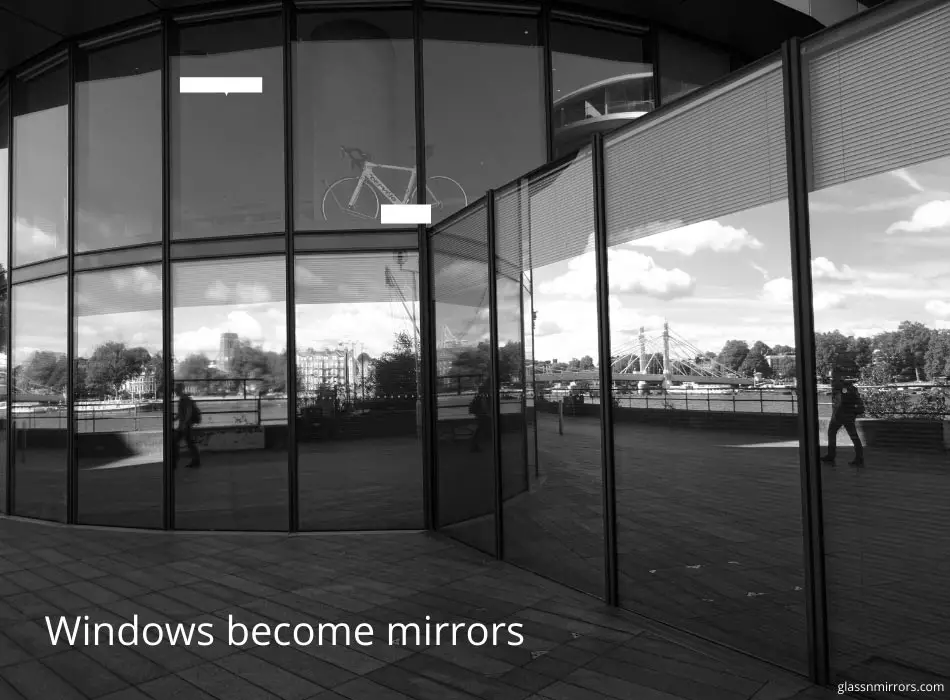
No glass is perfectly transparent. Otherwise, all the light that hits it would pass through undisturbed. A small amount of light gets reflected.
Take windows, for example. When it’s dark and there’s no sunlight or moonlight from outside, it’s easier to see light from inside the house. This is what makes windows behave like mirrors at night. Notice how much harder it is to see your reflection on a glass window during the day.
The sunlight makes it hard for the naked eye to see the little amount of light coming from sources inside the house.
Do This Experiment
Assuming it’s at night and you are inside your house or office, stand in front of your glass window. If there are no bright lights from outside, you can barely see anything through the glass but your reflection. Go ahead and turn off all the lights in the room. Notice how you can now see your outdoors better despite it being dark?
The point here is that the more light there is coming from a particular direction, the easier it is to see from the same direction. But, it’s harder to see anything through the glass in the opposite direction.
How Do Glass Mirrors Reflect Light?
A glass window or a glass mirror has a smooth surface that produces a virtual mirror image of an object. This owing to the light that is reflected from the mirror and right back into the eyes. The image is labeled ‘virtual’ because no light is produced and hence, it doesn’t actually exist.
For reflection to occur, two crucial factors must exist. You need light, a smooth or rough surface. Glass mirrors, therefore reflect light because they are a smooth surface that can reflect light.
Why Does Glass Sometimes Reflect Light – How the Eyes Work
The idea of reflection, refraction, transmission, and absorption of light is intriguing. But while it has a lot to do with the speed and movement of light, the eyes also have a role to play.
The eye’s sensitivity constantly changes when there’s light. When there’s too much light, the irises contract. This way, less light can pass through your eyes. The result is you see the bright light and no dim light nearby.
In the dark, your pupils expand to let in more light to facilitate better visibility. In this case, you can easily see dim light nearby.
Notice how you shield your eyes when you suddenly step out in the sun when coming out of a dark place? You stop for a moment and wait a few seconds for your eyes to adjust to the bright light. If possible, stand next to the light switch holding a mirror in a well-lit room. Turn the lights off, wait for about thirty seconds, then turn the lights back on. Look at how your pupil adjust. Can you see your eyes contracting?
Some people say they look bigger in a mirror. I explain why this happens.
Your perception of light depends on the inner workings of your eyes, particularly the pupil and the retina. This is why it takes half a minute to see clearly in a dark room and fewer seconds to see clearly in brighter places. The bottom line, our eyes see better in the light than in the dark.
Therefore, when light is refracted from outside your window, your pupil contract. Hence, reflected light remains invisible. At night, your pupils are dilated. This way, you see reflections clearly.
Can Colored Glass Reflect Light?
Colored glass cannot reflect light but can only absorb it. Colored glass cannot change the color of light because light already comes in different colors.
Owing to its intensity, the naked human eye only sees light as white. But, light comes in different shades like yellow, green, red, blue, orange, indigo, and violet. You only see colors like those of the rainbow, when the intensity of light is much lower.
During production, certain chemicals are mixed with liquid glass to make colored glass. This allows it to warm up and absorb varied frequencies of light. This process is called doping.
Does Colored Glass Change the Color of Light Passing Through It?
Colored glass does not change the color of light. Instead, it filters everything out and only retains the color of the glass.
In this case, blue glass can only pass blue light. This assumes that the source of light is white. You cannot see red light coming through the blue-colored glass because the blue-colored glass blocks all other colors other than its own.
Can Clear Glass Reflect Light in Different Colors?
Natural light comes in different colors. LED light is made up of a unique combination of different colors. If these colors undergo refraction when passed through glass, the colors become visible. A glass-like prism can separate light from each given source.
Other factors that can affect light reflection in glass include color-coated glass or glass etched with dots or fine lines.
Final thoughts
How light reflects through glass is what makes it possible for there to be lenses, microscopes, telescopes, and magnifying glasses. I hope that you have got some insights on how glass reflects light and more that we have covered in this article.
-
Hot Glass vs Cold Glass – What’s The Difference?
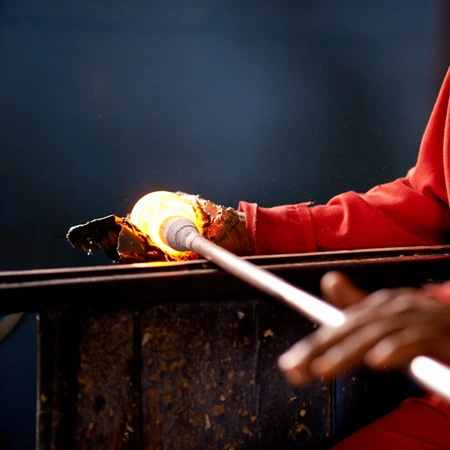
When most people think of glass, they probably think of windows or drinking glasses. But there is a lot more to glass than that. In fact, there are two main … Keep Reading
-
Can Quartz Be Made Into Glass? Guide On Quartz & Glass
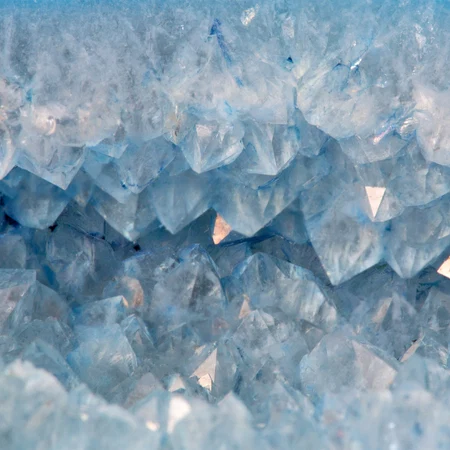
Glass making is a process that involves heating and cooling sand and other minerals. You may wonder whether it is possible to make glass out of quartz. Glass is made … Keep Reading
-
What Is Panda Glass | Ultimate Guide To Panda Glass
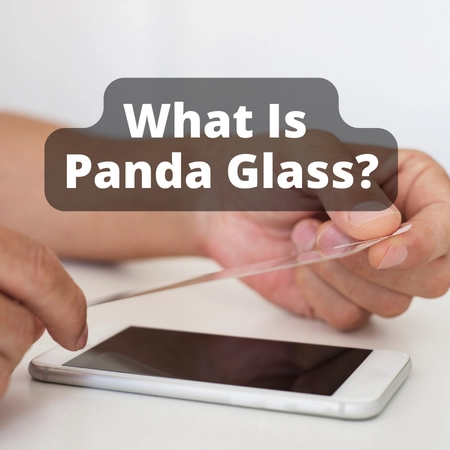
When looking for a new phone case, you may have encountered the term “panda glass.” A variety of phone cases on the market use this type of glass. But what … Keep Reading
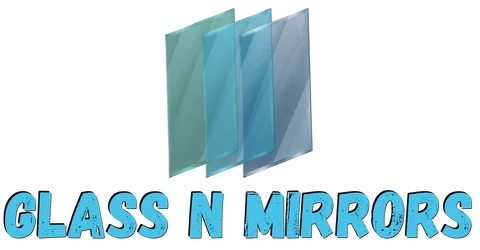
4 thoughts on “How Does Glass Reflect Light If It’s Transparent?”
Comments are closed.